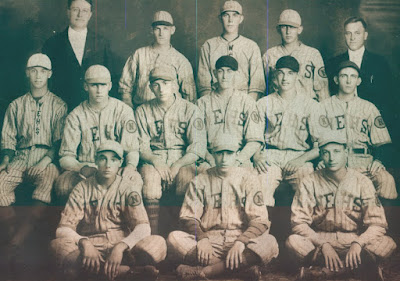It's really hard to impress high school students.
Tell them you spent 30-plus years as a sportswriter for a major metro daily newspaper -- meh. You interviewed the likes of Peyton Manning, Eli Manning, Ed Reed, Justin Jefferson and Jarvis Landry -- eh. Tell them you were just inducted into the Louisiana Sports Hall of Fame -- crickets.
But tell them you're related to Beyonce and they sit up and take notice!
"Really? Nuh uh. Have you been to her house? Can you call her?"
Ha! Now I've got their attention!
I really am (probably) related to Beyonce Knowles, but I don't think we'll be doing any line dances at family weddings together or going to any family reunions anytime soon. There are a lot of degrees of separation between her and me and one of them is kind of iffy, but hey! A thread is a thread.
Follow along.
Beyonce is the sixth great-granddaughter of Joseph Broussard dit Beausoleil, the legendary leader of the Acadian people who fought against the British in King George's War and the Seven Years War. The Acadians eventually lost, the British took over and began what came to be called Le Grand Derangement, during which many of our ancestors and their families were cast out of their lands and set adrift. Families were separated and sent on different ships to different shores, never to be reunited. Remember the story of Evangeline and Gabriel?
Joseph Broussard eventually led a group of displaced Acadians to Louisiana, which was Spanish-owned at the time but French-friendly, and needed all the settlers it could get. The Acadians quickly acclimated to the bayou country and made it their new home. Then they had lots of baby Broussards. One of those, Armand Broussard, eventually led to Beyonce.
I am not a direct descendant of the legendary Beausoleil but probably of his brother, the lesser-known but just as ornery Alexandre Broussard dit Beausoleil. who hid in the Acadia woods for three years in resistance to the British with Joseph. He had 11 children before leaving Acadia with his wife, Marguerite Thibodeau, but did eventually make his way, first to Haiti, then to New Orleans, then to Pointe Coupee, and on to St. Martinville. Sadly, he and his wife died of the Plague shortly after their arrival in Louisiana in 1765. (It is believed they were exposed in Haiti.)
My sixth great-grandmother was Marguerite Broussard, who was born in 1727 in Acadia. Some sources show her to be the daughter of Alexandre and Marguerite. The WikiTree, which is an open-source family tree, does not show her to be their daughter but has no parents listed. She definitely was a Broussard, though, and connected to Beausoleil's parents somehow. She married Helio (or Julien) Viaud around 1747. They both eventually made their way to Louisiana and are listed on the Wall of Names in St. Martinville, which lists more than 3,000 Acadian refugees.
They had one known child, Catherine, on Jan 1, 1752 in Acadia. Catherine somehow ended up in France, where she married Jean Cecile Bourg in 1784. She and her husband arrived in Louisiana in 1785 and they both are on the list of names in St. Martinville.
Catherine and Jean Bourg had six children, including my fourth great-grandfather, Jean Similen Bourg, born Feb. 28, 1792, in Plattenville, Louisiana. He married Rosalie Eleonore Lirette on October 1, 1809, in Plattenville. The Terrebonne Parish census of 1850 lists Jean Bourg, 68, and his wife, Rosalie, 55, living in the Bayou Terrebonne area. Neither of them could read or write. Living with them was an 11-year-old boy named Zenon Rodrigues. All said their parents were born in Louisiana. They lived one door away from their daughter Eulalie and her family.
Eulalie Clementine Bourg was married to Francois Naquin. Her brother Jean Similien Bourg Jr., my great-great-great-grandfather, was married to Marie Celeste Naquin.
Their daughter Melina Bourg, my great-great-great-grandmother, was born in 1840 in Thibodaux, Louisiana. She married Simeon Theodule Dupre in 1864.
Their son Germain Dupre, was my great-grandfather, who married Marie Louise Thibodeaux.
Their daughter, Pauline Dupre, was my father's mother.
Am I absolutely certain about all of this? No. But a lot of people with a lot more time than I have did a lot of research and put this all out there for the rest of us to find. Genealogy is a big, giant jigsaw puzzle like that except you have to FIND the pieces before you can put them together. Either way, Beyonce and I are (perhaps) cousins many, many, many times removed. So are Prince Charles and I. And Elvis.
They could do a lot worse than me, a semi-retired Hall of Fame sportswriter-turned-teacher. And I'll happily do the Electric Slide with any of them.














